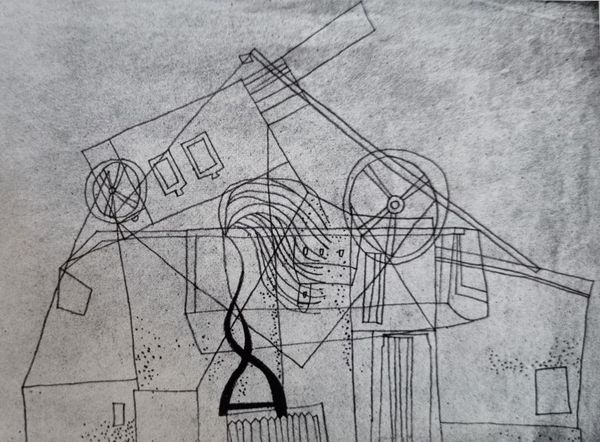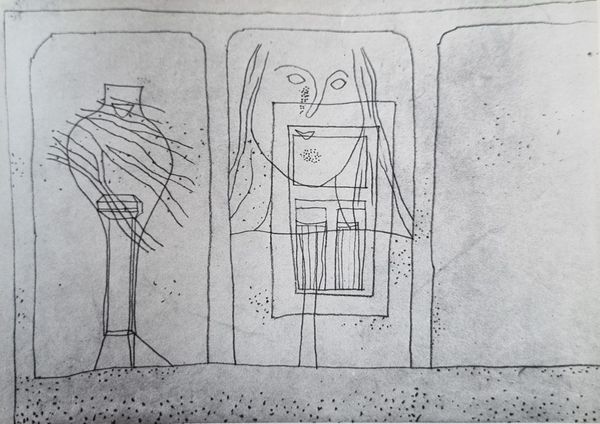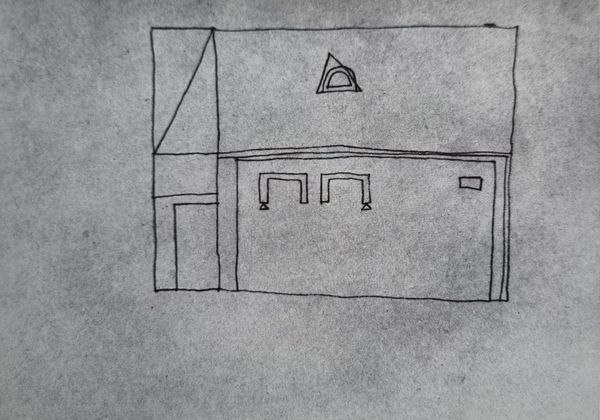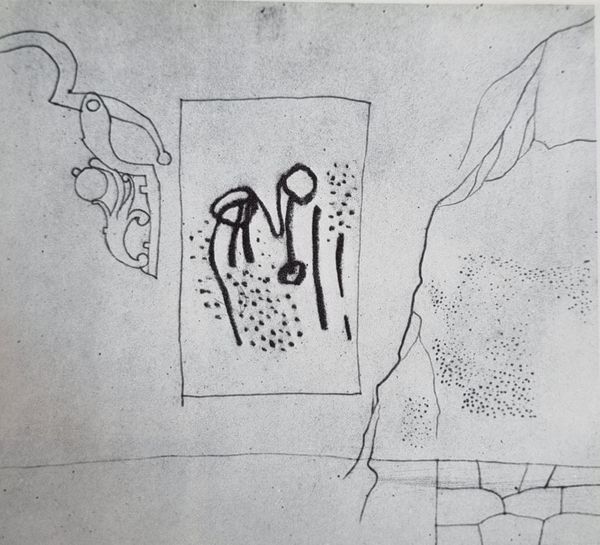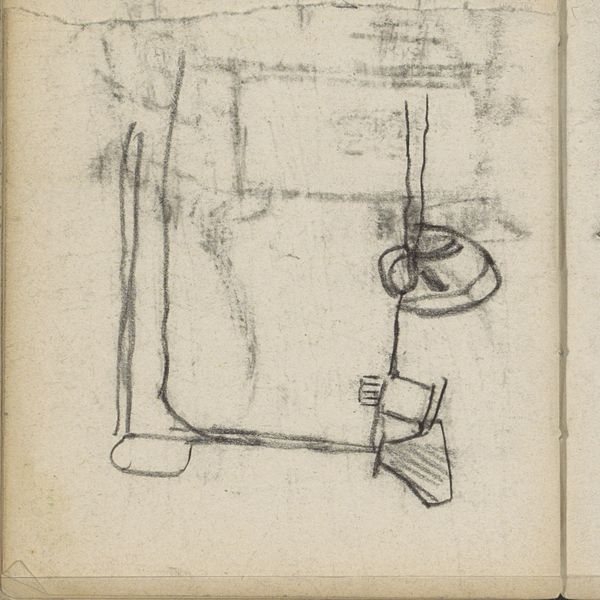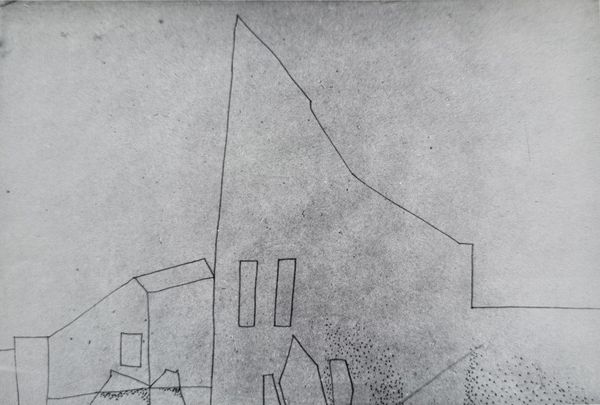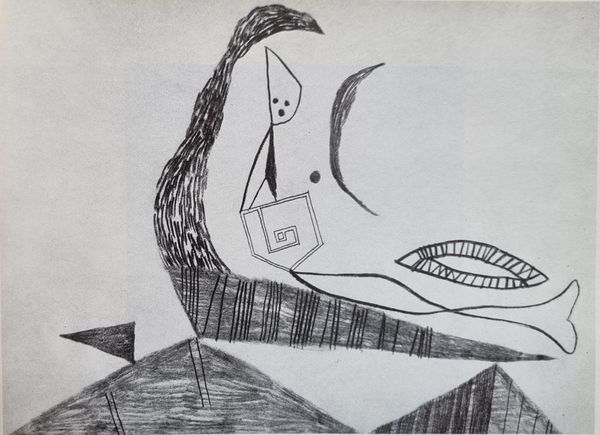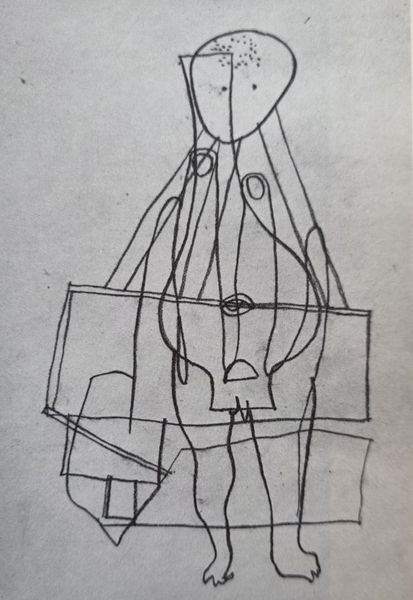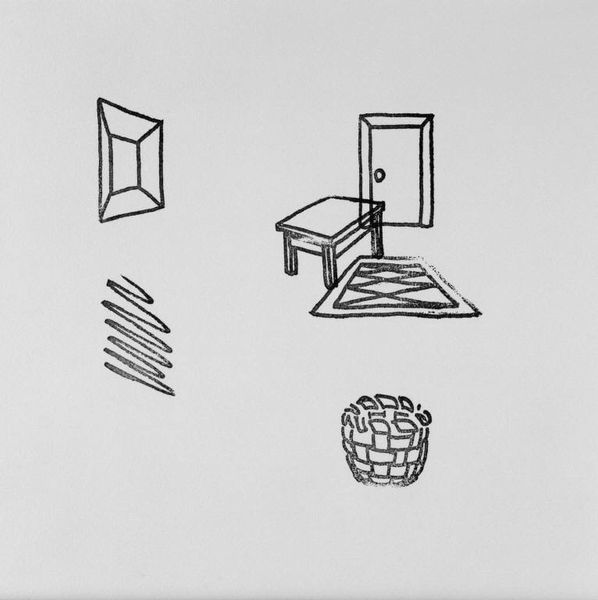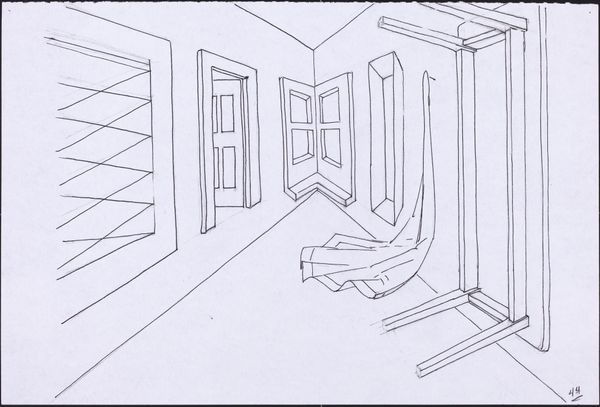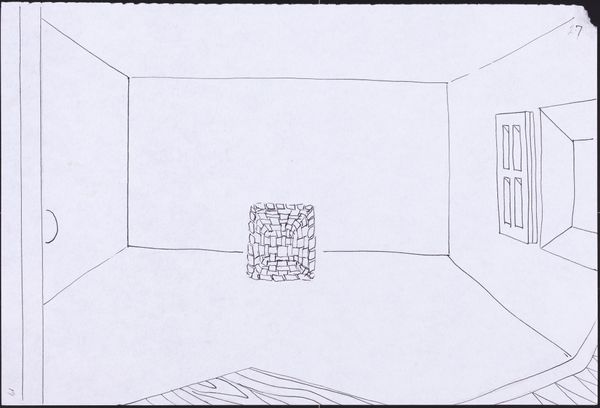
Copyright: Public domain
Curator: Let's delve into Vajda Lajos’ "Still Life with Chair" from 1934, rendered in pencil. Editor: My first impression is starkness. The bare geometric forms give off an air of loneliness, as though the objects are isolated in their individual existences. Curator: I see it more as a snapshot of the artist’s workspace. Look closely at the textures rendered solely through pencil work – a book held open, perhaps capturing immediate thoughts. It's all about the artist capturing objects immediately at hand, with unpretentious directness, focusing on representing immediate surroundings that were central to his everyday work. Editor: Yes, the material qualities contribute, though the roughness only accentuates the drawing’s formal arrangements, its exploration of shapes and how they intersect. There’s a dialogue happening among the flat planes, the stark lines and simplified shapes; a certain austerity prevails, even. Curator: The labor required, too, to coax depth and detail with the sparest of means is part of the impact here. The sketch suggests the kind of still-life objects readily available to the average person, made relatable as the product of work. It feels less focused on a transcendent aesthetic goal, but rather it serves as a kind of labor practice or a preparatory material process for realizing the goal. Editor: The restricted grayscale palate serves only to highlight compositional strategies – like that deliberate juxtaposition of rounded and straight-edged forms and figures. Notice the composition: a book or document propped on a stand with some circular form on a small table—each one is framed inside simple boxes of space—achieving an abstract order in its austerity and bare quality. Curator: Absolutely! I am thinking of it more like the ordinary realities that are abstracted to give voice to personal experiences in post-war Hungary where artists experimented with materials and spaces from daily experience to make statements, and not as mere form. Editor: I concur that the materials employed reveal a specific and direct purpose – the visual construction. However, to truly understand its language, one needs to scrutinize its composition and appreciate how formal devices communicate emotion. Curator: And understanding its social context helps give perspective to its artistic intention. It feels right that the simple material contributes to making it all come together. Editor: A truly remarkable pencil work! I must confess my appreciation has broadened for this work's delicate nuances through examining its composition of simple shapes.
Comments
No comments
Be the first to comment and join the conversation on the ultimate creative platform.


